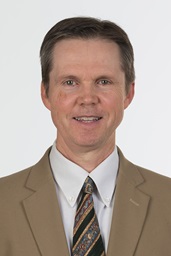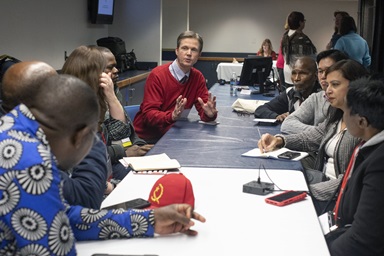The news of the burning of a Jordanian pilot by Islamic State militants has caused me to do what I am always reluctant to do: look again at the pictures of the lynchings and burning of blacks by the KKK and by others. An Internet search will locate those pictures.
That search also reveals those pictures often appeared on postcards that were widely circulated.
I have had the opportunity as a black United Methodist clergyman, now retired, to be in conversation, discussion groups and one-on-one conversations with white people — many of whom have become long-time friends. I cannot count the number of times I have heard from many of them something like this: "Gil, I was unaware of, unknowing about, the brutality blacks experienced in our nation."
I have heard those words after viewings of “Selma.” The depictions of the police brutality of what is now known as "Bloody Sunday" in the film have had an impact that seems to have unleashed within some a new questioning of themselves. If they were alive at that time, or read history, then they ask: "Why did I not know?" The depiction of the bombing of Birmingham's 16th Street Baptist Church in the film exacerbates their questioning of themselves.
I suggest that the words Ralph Ellison has his character in “Invisible Man” speak be paraphrased to address this blindness, dumbness and deafness about black history: "I (Black History) am invisible, understand, simply because people refuse to see me. … I have been surrounded by mirrors of hard, distorting glass."
Lynchings and burnings
As I write this, I have in front of me an enlarged picture of a black man who was lynched, then placed on a pile of burning wood. His body shows that as his flesh burned, it blistered, making his dark skin darker, and it is evident that "ashes to ashes, dust to dust" will soon describe his body. "Then shall the dust return to the earth as it was; and the spirit shall return unto God who gave it" (Ecclesiastes 12:7, KJV).
And, in the picture are white men and boys, most of them with ties, some of them smiling, as they look at the camera. How should these pictures of a slice of black history that some would deny, others would revise, and still others would respond to with amnesia, shape our response to the brutality of Islamic State group militants?
In other pictures that I have, there are men in their white robes gathered around burning crosses. If they are not Christian terrorists, why should we be so certain about speaking/writing of Islamic terrorists?
I suggest that Black History Month 2015 become, as never before, American/Black History Month. The best way to begin to understand others and why they do what they do is to begin to understand why some Americans have done what they have done. It is in looking at ourselves – warts and all – that we begin to understand others and enable or empower them to join us in the human journey toward equality and justice.
Marcus J. Borg, theologian and biblical scholar, died recently. His 1995 book, “Meeting Jesus Again for the First Time,” has had a powerful impact upon my life. I suggest in this American/Black History Month that we meet black history, maybe for the first time, if we want to be able to ever sing the spiritual: "Soon I will be done with the troubles of the world."
There are learnings from American/Black History that, if embraced and allowed to shape the present and the future, would re-shape, reform and reconstruct the history being made in these moments. Let us dare to begin!
Caldwell is a retired elder and member of the Rocky Mountain Conference. A member of the board of the African-American Methodist Heritage Center, he lives in Asbury Park, New Jersey.
News media contact: Vicki Brown, [email protected] or 615-742-5469.
Like what you're reading? Support the ministry of UM News! Your support ensures the latest denominational news, dynamic stories and informative articles will continue to connect our global community. Make a tax-deductible donation at ResourceUMC.org/GiveUMCom.




